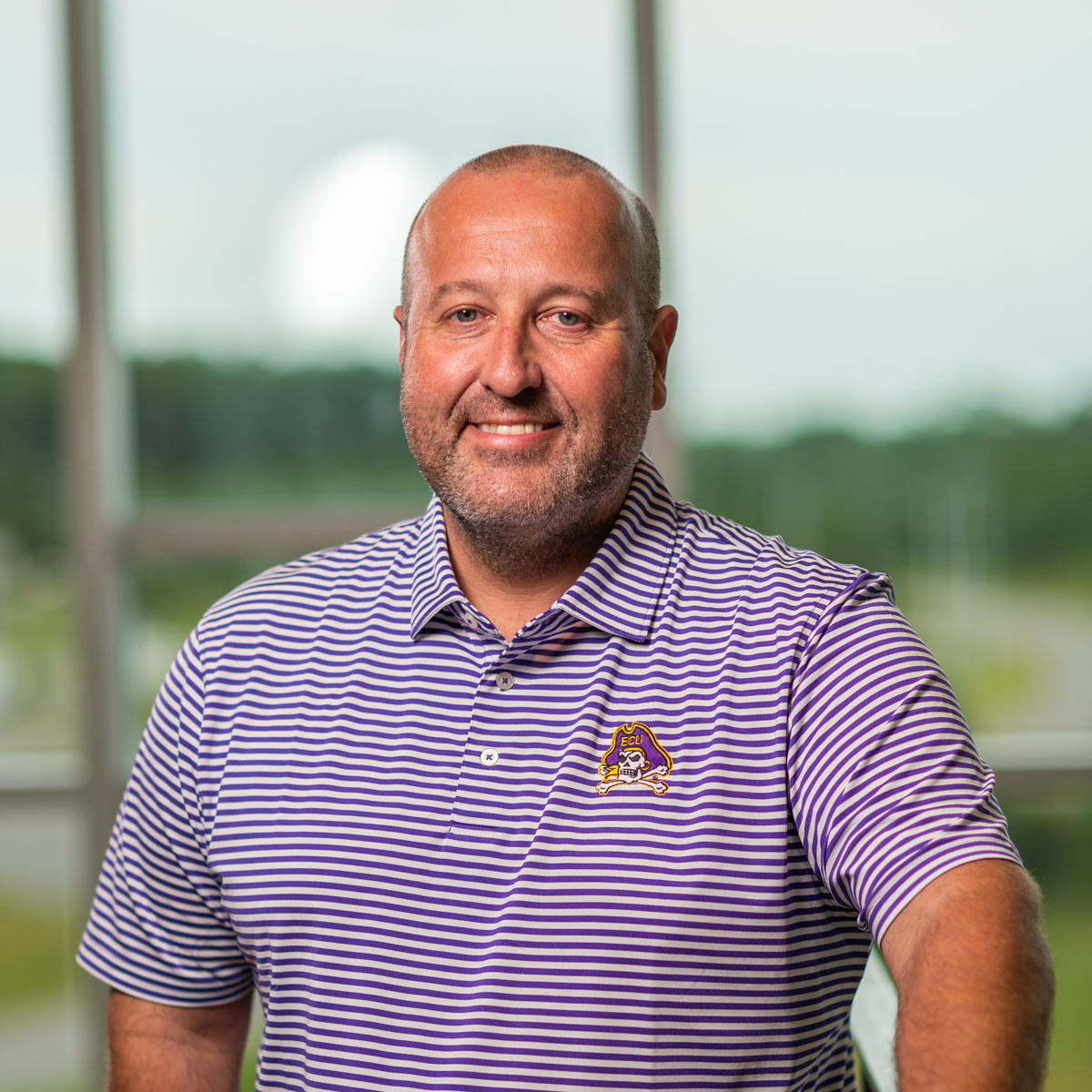
Imagine a research hub with a variety of ecosystems right outside the door. There are marshes, wetlands, beaches, and maritime forests. The surrounding bodies of water are warm or cold; salty, fresh, or brackish- a combination of the two. Talent abounds and the research options seem unlimited. According to Dr. Stu Hamilton, such is the Coastal Studies Institute on the Outer Banks in northeastern North Carolina.
In addition to being a CSI scientist since moving to the area in August 2022, Dr. Hamilton is also the chair of the ECU Department of Coastal Studies and a professor. By training, he is a geographic information systems (GIS) specialist, and he uses his expertise to study near-shore environments around the world.
Hamilton grew up on the coast in Crosby, England, outside of Liverpool, and enjoyed spending time on the water as a child. In graduate school, he was invited on a research trip to Ecuador. While there he noticed a significant loss of mangroves due to deforestation for pond development. It was through this trip, roughly two decades ago, that Hamilton recognized his GIS skills could be used to help solve environmental issues. Since then, the number of those in his field has increased. He has made connections all over the world and has incorporated a variety of remote sensing tools, including LIDAR data from satellites and remotely operated vehicles such as drones and the Z-Boat, into his work.
One of Dr. Hamilton’s longest running projects has focused on water quality in the lakes of central Africa, primarily Lake Victoria but also including Lakes Albert, George, and Edward. Aquaculture, specifically tilapia farming, has rapidly developed, with little regulation, in those areas. As operations have expand, water quality has deteriorated thus impacting the availability of clean drinking water, overall food security, and even ecological interactions further down the chain.
When Hamilton first began working with officials in Uganda, Tanzania, and Kenya, the countries bordering Lake Victoria, little was known about the geophysical characteristics of the area. By conducting surveys in the water, along the shoreline, and from above, Hamilton and collaborators sought to establish baseline measurements and delineations for the shoreline, the wetlands, and the bathymetry- or depth profiles- in the lakes. As these baselines were established over many years, Hamilton’s team then began to create water circulation models to predict how water might flow through each lake. The models also consider parameters of water quality, meaning that, as aquaculture operations in the lakes continue to expand, the models can highlight particular areas or factors of concern as they relate to both human and ecological health.
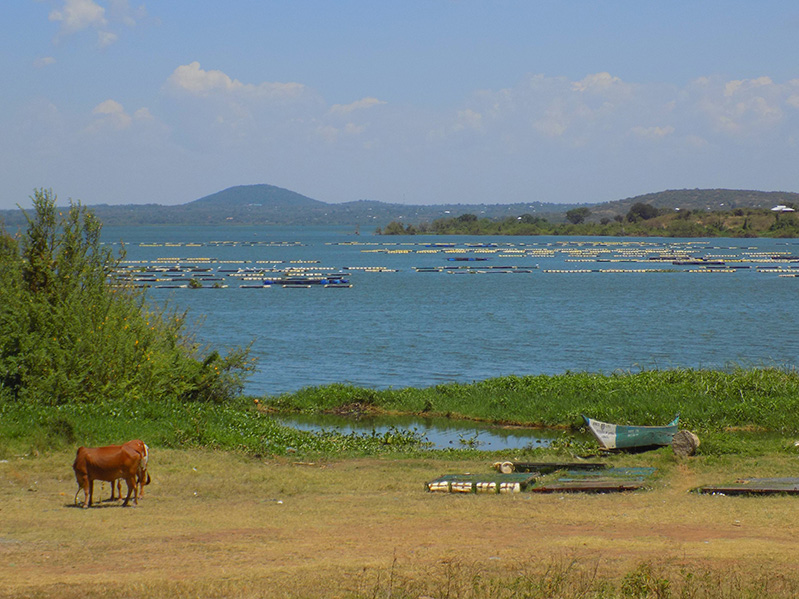
A view of aquaculture operations from the lake shore.
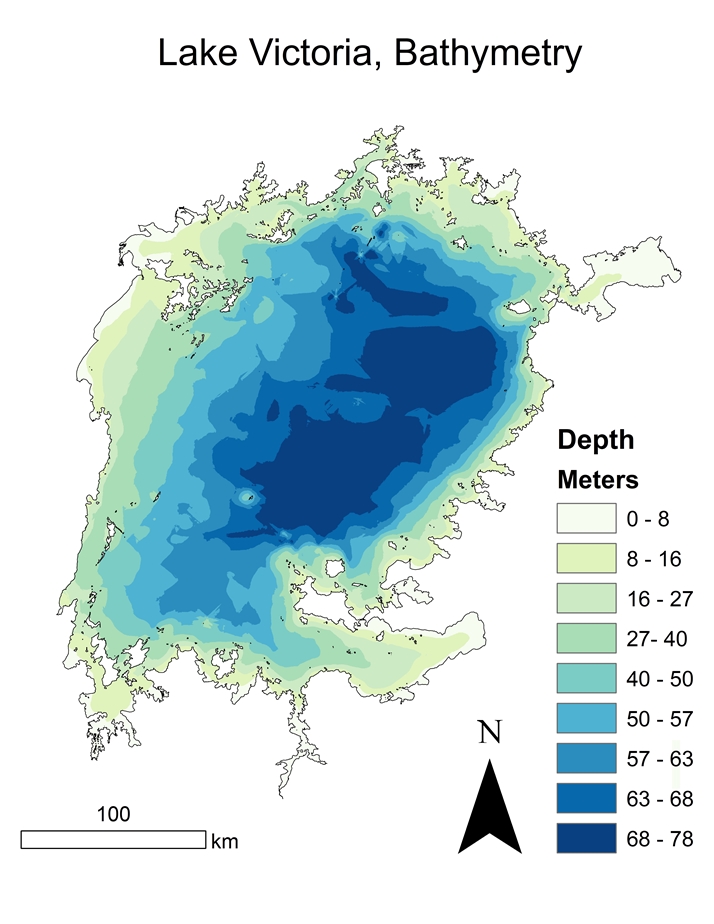
Maps showing bathymetry, or depth, in Lake Victoria, such as the one above, can be generated from Dr. Hamilton’s studies.
Much closer to CSI, Dr. Hamilton is also working in partnership with Vesta as the corporation begins a carbon sequestration study in Duck, NC.
Vesta’s approach to combatting a changing climate is to add carbon-capturing olivine, a naturally occurring mineral, to sand. As it is washed into the ocean, it dissolves, thus reducing the acidity of the seawater and permanently removing carbon dioxide from the atmosphere. The ocean is widely acknowledged as a carbon sink, meaning it already captures more carbon from the atmosphere than it releases. So far, lab results have been promising, and the group is now expanding their research- and the ocean’s ability to sequester carbon- to include a mile-long study site along the Outer Banks beach.
So how does Dr. Hamilton fit in with this project? A sand and olivine berm will be built, and, using drones and drone boats, Hamilton will conduct multiple surveys of the site to assess the longevity of the berm, how it breaks apart, if and how it may create a plume in the water, and, finally, how the nearshore bathymetry might change over time. This is just one piece of the ongoing project, but important, nonetheless. Should this project succeed, it could be a climate change mitigation strategy implemented all over the world.
“The water quality here is a driving force of the entire economy. It impacts fisheries, both near shore and offshore, as well as tourism,” states Hamilton. “A clean, sustainable, water supply- if it’s economically viable- can provide great stimulus. But it can’t be an economic stimulus if it’s environmentally destroyed. It also can’t be environmentally pristine and then economically deficient. There’s got to be an [understood balance].”
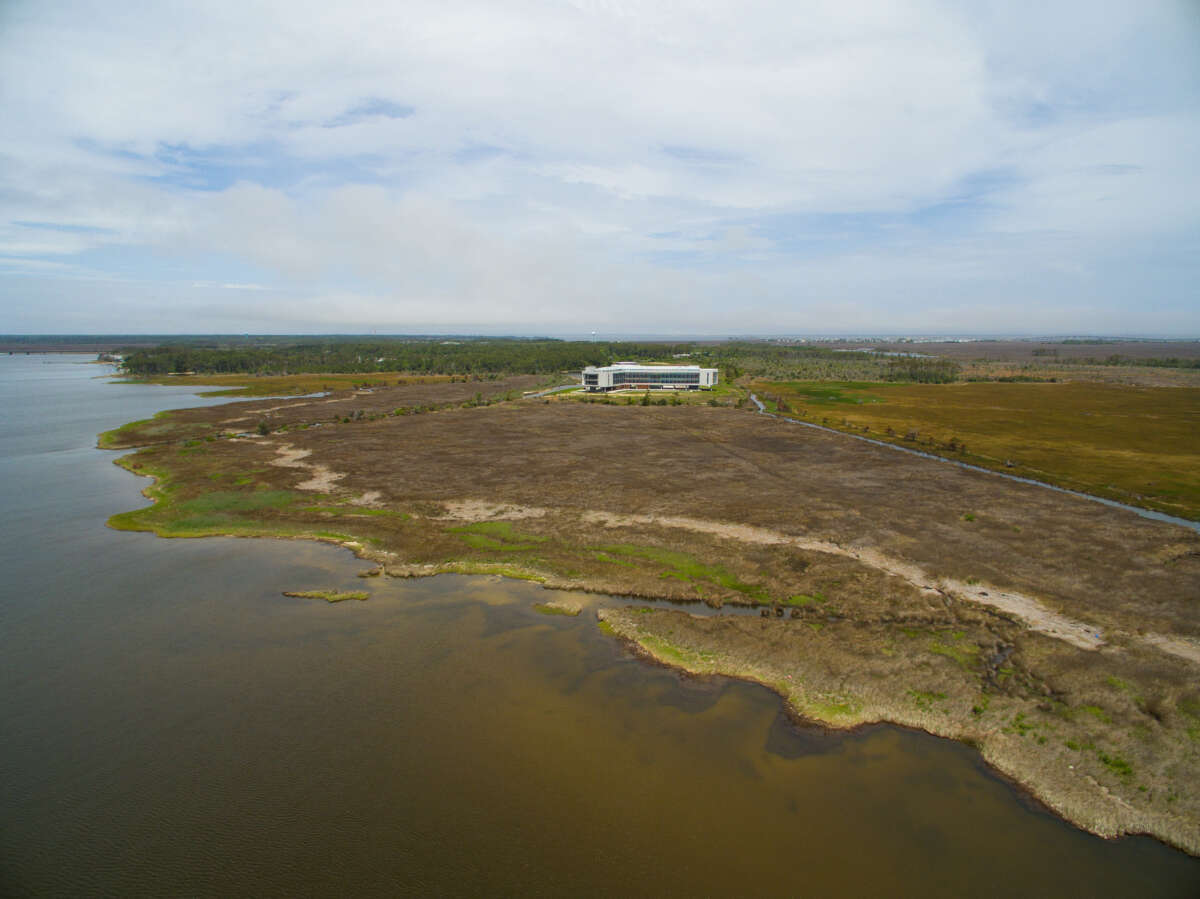
The ECU Outer Banks Campus and the surrounding area provide a fantastic place for Hamilton to perfect his research methods.
Likewise, studies done in the Outer Banks’ own back yard, so to speak, are obviously valuable to the people who live, work, and vacation in the area. The more climate change impacts can be understood and mitigated, the more likely it becomes for the Outer Banks to continue as a tourism-based economy. Additionally, findings from locally based studies may prove helpful internationally, and vice versa.
Mitigation efforts may be local but “the fix”, as Hamilton puts it, is not necessarily local.
“If we reduce carbon in the atmosphere here, it won’t always reduce sea level here, too. It’s global sea level stability that needs to occur. It doesn’t really matter if it’s reduced in the Southern Ocean, we still benefit. Nor does it matter if it’s reduced here, if somewhere like Australia benefits. It’s a global problem with local solutions,” he states.
With his work spanning across continents, Hamilton is certainly taking the global approach. As a scientist whose work at every study area generally happens within a 1-mile radius of the shore, Dr. Hamilton is well pleased with his setup on the ECU Outer Banks Campus. When he is not in a distant land, he is excited to test research methods for all sorts of projects right here on Roanoke Island.
The preceding story first appeared in the Spring 2024 edition of CoastLines.

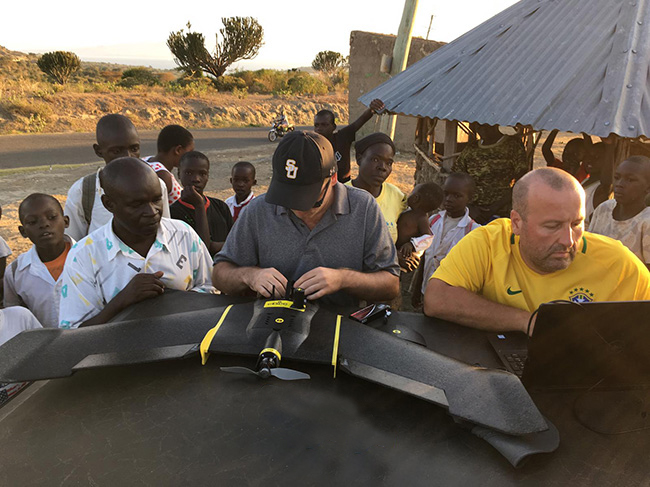

 Based at the Coastal Studies Institute (CSI), the North Carolina Renewable Ocean Energy Program (NCROEP) advances inter-disciplinary marine energy solutions across UNC System partner colleges of engineering at NC State University, UNC Charlotte, and NC A&T University. Click on the links below for more information.
Based at the Coastal Studies Institute (CSI), the North Carolina Renewable Ocean Energy Program (NCROEP) advances inter-disciplinary marine energy solutions across UNC System partner colleges of engineering at NC State University, UNC Charlotte, and NC A&T University. Click on the links below for more information. ECU's Integrated Coastal Programs (ECU ICP) is a leader in coastal and marine research, education, and engagement. ECU ICP includes the Coastal Studies Institute, ECU's Department of Coastal Studies, and ECU Diving and Water Safety.
ECU's Integrated Coastal Programs (ECU ICP) is a leader in coastal and marine research, education, and engagement. ECU ICP includes the Coastal Studies Institute, ECU's Department of Coastal Studies, and ECU Diving and Water Safety. The ECU Outer Banks campus is home to the Coastal Studies Institute.
The ECU Outer Banks campus is home to the Coastal Studies Institute.

